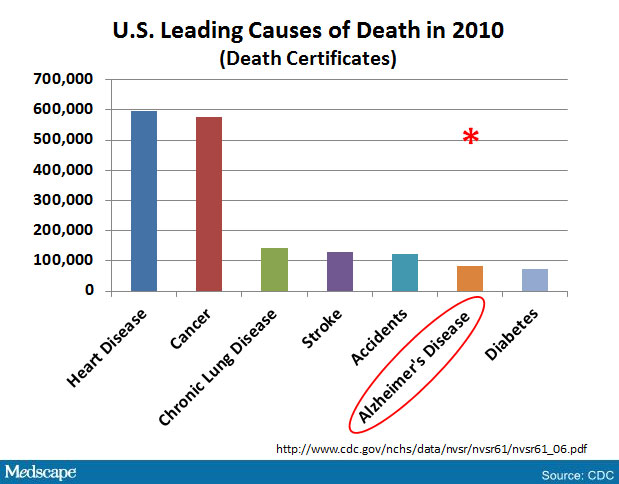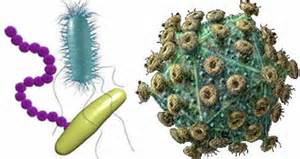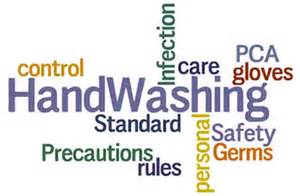The topics and treatment plans in nutritional,
vitamin, mineral, herbal and essential oils also address these areas.
Chronic diseases - ongoing, generally incurable
illnesses, such as asthma, arthritis, cancer, diabetes and heart disease -
are the single greatest threat to our nation's health and to our health care
system.
|
Truth
#1
|
Chronic diseases are the
No. 1 cause of death and disability in the U.S.
|
|
Truth
#2
|
Treating patients with
chronic diseases accounts for 75 percent of the nation's healthcare
spending.
|
|
Truth
#3
|
Two-thirds of the increase in health care spending is
due to increased prevalence of treated chronic disease.
|
|
Truth
#4
|
The doubling of obesity between 1987 and today
accounts for 20 to 30 percent of the rise in health care spending.
|
|
Truth
#5
|
The vast majority of cases of chronic disease could
be better prevented or managed.
|
|
Truth
#6
|
Many Americans are unaware of the extent to which
chronic diseases could be better prevented or managed.
|
apic.org
-
The Association for Professionals in
Infection Control and Epidemiology (APIC)
When you or a loved one goes
into a healthcare facility when you’re sick, you expect to get better—right?
But did you know that each year nearly 1.7
million people in the U.S. get infections in hospitals while being treated
for something else?
Unfortunately, nearly 99,000
people each year die from these infections—many of which could have been
prevented with proper infection prevention practices
.
Everyone plays a role in
infection prevention—patients, families, and healthcare personnel. You play
an important role in infection prevention—in and out of healthcare
facilities.
Do your part! Wherever you are, there is something you
can do to stay safe from infections.
www.stopgerms.org - ©
StopGerms.org - Alliance for Consumer Education
Public Health is best
promoted by preventing disease. Cleanliness promotes good
health. Yet each year, because of a simple lack of knowledge, people
of all ages unwittingly come in contact with disease causing pathogens.
They risk illness as a result. They can also transmit germs to loved
ones in their homes, colleagues at work and school, and to others in the
community. This continuing cycle of disease presents a challenge to
the good health of adults and children through the United States and around
the world.
top
Alarming Health Statistics

www.fightchronicdisease.org
-
©
Partnership to Fight Chronic Disease
All Rights
Reserved.
The Impact of Chronic Disease:
Chronic
diseases are the most prevalent and costly health care problems in the United
States. Nearly half (45 percent) of all Americans suffer from at
least one chronic disease. More than two-thirds of all deaths are caused by one
or more of five chronic diseases: heart disease, cancer, stroke, chronic
obstructive pulmonary disease, and diabetes. Many chronic diseases are lifelong
conditions, and their impact lessens the quality of life not only of those
suffering from the diseases, but also of their family members, caregivers, and
others.
Chronic disease not only affects health and quality of life, but is also a major
driver of health care costs and threatens health care affordability. According
to the Centers for Disease Control and Prevention (CDC), chronic disease
accounts for about 75 percent of the nation's aggregate health care spending -
or about $5,300 per person in the U.S. each year. In taxpayer-funded programs,
treatment of chronic disease constitutes an even larger proportion of spending -
96 cents per dollar for Medicare and 83 cents per dollar for Medicaid. Much of
the persistent increase in spending over the past two decades is attributable to
rising disease prevalence, lower clinical thresholds for treatment, and new
medical innovations that have emerged to treat chronic and other diseases.
Unhealthy behavior and increased incidence of chronic disease are also extremely
costly in terms of health care coverage affordability. Since 2000, health
insurance premiums for employer-sponsored family coverage have increased by 87
percent. Health care costs for people with a chronic condition average $6,032
annually - five times higher than for those without such a condition.
Chronic disease also has broader economic impact. Poor health and chronic
disease reduce economic productivity by contributing to increased absenteeism,
poor performance, and other losses. A Milken Institute analysis determined that
treatment of the seven most common chronic diseases, coupled with productivity
losses, cost the U.S. economy more than $1 trillion dollars annually. The same
analysis estimates that modest reductions in unhealthy behaviors could prevent
or delay 40 million cases of chronic illness per year.
World
Health Organization (WHO) - pdf
The burden of
chronic diseases is rapidly increasing worldwide. It has been calculated that,
in 2001, chronic diseases contributed approximately 60% of the 56.5 million
total reported deaths in the world and approximately 46% of the global burden of
disease (1). The proportion of the burden of NCDs is expected to increase to 57%
by 2020.
It
has been projected that, by 2020, chronic diseases will account for almost
three-quarters of all deaths worldwide, and that 71% of deaths due to ischaemic
heart disease (IHD), 75% of deaths due to stroke, and 70% of deaths due to
diabetes will occur in developing countries (4). The number of people in the
developing world with diabetes will increase by more than 2.5-fold, from 84
million in 1995 to 228 million in 2025 (5).
Chronic
diseases are largely preventable diseases. Although more basic research may
be needed on some aspects of the mechanisms that link diet to health, the
currently available scientific evidence provides a sufficiently strong and
plausible basis to justify taking action now.
On a global
basis, 60% of the burden of chronic diseases will occur in developing countries.
Indeed, cardiovascular diseases are even now more numerous in India and China
than in all the economically developed countries in the world put together (2).
As for overweight and obesity, not only has the current prevalence already
reached unprecedented levels, but the rate at which it is annually increasing in
most developing regions is substantial (3). The public health implications of
this phenomenon are staggering, and are already becoming apparent.
The
chronic disease problem is far from being limited to the developed regions of
the world. Contrary to widely held beliefs; developing countries are
increasingly suffering from high levels of public health problems related to
chronic diseases. In five out of the six regions of WHO, deaths caused by
chronic diseases dominate the mortality statistics (1).
It
is clear that the earlier labeling of chronic diseases as ‘‘diseases of
affluence’’ is increasingly a misnomer, as they emerge both in poorer
countries and in the poorer population groups in richer countries. This shift
in the pattern of disease is taking place at an accelerating rate; furthermore,
it is occurring at a faster rate in developing countries than it did in the
industrialized regions of the world half a century ago (3). This 4 rapid rate of change, together with the increasing burden of disease, is
creating a major public health threat, which demands immediate and effective
action.
www.cdc.gov
- Ounce of Prevention - brochure pdf
Infectious
Diseases - The Facts Behind the Urgency:
There are many types
of germs (viruses, bacteria, parasites, fungi) that cause many types of
illnesses – including the common cold or flu, food borne illness, Lyme
disease, hantavirus, or plague. These germs can spread easily from one person to
another – and have wide-reaching effects.
-
About 10 million U.S. adults (ages 18 - 69) were
unable to work during 2002 due to health problems.
-
Salmonella infections
are responsible for an estimated 1.4 million illnesses each year.
-
Infectious diseases
cost the U.S. $120 billion a year.
-
More than 160,000
people in the U.S. die yearly from an infectious disease.
top
Diet,
Nutrition & Prevention of Chronic Disease

Reference Source -
World
Health Organization
(WHO) -
pdf
In order to achieve
the best results in preventing chronic diseases, the strategies and policies
that are applied must fully recognize the essential role of diet, nutrition and
physical activity.
-
Physical activity has great influence on body
composition --- on the amount of fat, muscle and bone tissue.
-
To a large extent, physical activity and nutrients
share the same metabolic pathways and can interact in various ways that
influence the risk and pathogenesis of several chronic diseases.
-
Cardiovascular fitness and physical activity have been
shown to reduce significantly the effects of overweight and obesity on
health.
-
Physical activity and food intake are both specific and
mutually interacting behaviors that are and can be influenced partly by the
same measures and policies.
-
Lack of physical activity is already a global health
hazard and is a prevalent and rapidly increasing problem in both developed
and developing countries, particularly among poor people in large cities.
Diet and nutrition are important factors in the promotion
and maintenance of good health throughout the entire life course. Their role as
determinants of chronic NCDs is well established and they therefore occupy a
prominent position in prevention activities (1).
The latest scientific evidence on the nature and
strength of the links between diet and chronic diseases is examined and
discussed in detail in the following sections of this report. This section
gives an overall view of the current situation and trends in chronic diseases at
the global level.
The chronic diseases considered in this report are those
that are related to diet and nutrition and present the greatest public health
burden, either in terms of direct cost to society and government, or in terms of
disability adjusted life years (DALYs). These include obesity, diabetes,
cardiovascular diseases, cancer, osteoporosis and dental diseases.
To read in its entirety...World
Health Organization
(WHO) -
pdf
top
Infectious
Diseases
Defined

Alarming Statistics - Infectious Diseases
Medline
Plus – A service of the National Library of Medicine & the
National Institute of Health
Infectious Diseases
-
also called Communicable Diseases kill more people worldwide than any other single cause. Infectious
diseases are caused by germs. Germs are tiny living things that are found
everywhere - in air, soil and water. You can get infected by touching, eating,
drinking or breathing something that contains a germ. Germs can also spread
through animal and insect bites, kissing and sexual contact. Vaccines, proper
hand washing and medicines can help prevent infections.
There are
four main kinds of germs:
-
Bacteria-
one-celled germs that multiply quickly and may release chemicals which can
make you sick
-
Viruses
- capsules that contain genetic material, and use your own cells to multiply
-
Fungi-
primitive vegetables, like mushrooms or mildew
-
Protozoa–
one-celled animals that use other living things for food and a place to live
Causes
of Infectious Diseases?
According to the Centers for Disease Control and Prevention
(CDC), one or more of the following causes an infectious disease:
-
Viruses
-
Bacteria
-
Parasites
-
Fungi
Infectious diseases can range from common illnesses, such
as the cold, to deadly illnesses, such as AIDS. Depending on the specific
illness and country (some countries with poor community hygiene may still
experience waterborne transmission of a disease), an infectious disease can
spread in some or all of the following ways:
-
Sexual transmission
- transmission of an
infection through sexual contact, including intercourse
-
Airborne transmission
- transmission of an
infection through inhaling airborne droplets of the disease, which may exist
in the air as a result of a cough or sneeze from an infected person
-
Blood-borne transmission
- transmission of an
infection through contact with infected blood, such as when sharing
hypodermic needles
-
Direct skin contact
- transmission of an
infection through contact with the skin of an infected person
-
Insect-borne transmission
- transmission of an
infection through insects, such as mosquitoes, which draw blood from an
infected person and then bite a healthy person
-
Food-borne transmission
- transmission of an
infection through consuming contaminated food
-
Water-borne transmission
- transmission of an
infection through contact with contaminated water
-
Other mechanisms
that can transmit a disease
In developed countries, most infections are spread through
sexual, airborne, blood-borne, and direct skin contact transmission.
top
Understanding
Infection vs. Disease
Medline
Plus - Infections
There's a distinct difference
between infection and disease. Infection, often the first step, occurs when
bacteria, viruses or other microbes enter your body and begin to multiply. Disease
occurs when the cells in your body are damaged — as a result of the infection
— and signs and symptoms of an illness appear.
In response to infection, your immune system springs
into action. An army of white blood cells, antibodies and other mechanisms goes
to work to rid your body of whatever is causing the infection. For instance, in
fighting off the common cold, your body might react with fever, coughing and
sneezing. Full listing of all infectious diseases, please review here…Medline
Plus - Infections
What is the difference between viruses and bacteria?
Viruses and bacteria cause the majority of infections.
Viruses cause most colds, flu, coughs, and sore throats. Bacteria cause most ear
and sinus infections, strep throat, and urinary tract infections. Both bacteria
and viruses can enter the body in many ways, including through inhalation, food,
sexual contact, and skin contact.
How do antibiotics work against infections?
Antibiotics can be used to treat bacterial infections.
However, antibiotics are ineffective in treating virus-related illnesses.
In addition, antibiotics treat specific bacteria and overuse or misuse of
antibiotics can lead to drug-resistant bacteria. It is important that
antibiotics are taken properly and for the duration of the prescription. If
antibiotics are stopped early, the bacteria may develop a resistance to the
antibiotics.
top
A Guide on the Overuse of
Antibiotics
Link to "GETSMART
Know When Antibiotics Work”
designed to educate patients about the overuse and inappropriate use of
antibiotics.
See In-depth Information on Antibiotic Resistance
top
Viruses, Bacteria, Fungi & Germs

Content Provided From
-
www.mayoclinic.com
Bacteria, viruses and other infectious organisms — germs — live everywhere.
You can find them in the air, on food, plants and animals, in the soil, in the
water, and on just about every other surface — including your own body. These
microbes range in size from microscopic single-celled organisms to parasitic
worms that can grow to several feet in length.
Most
of these organisms won't harm you. Your immune system protects you against a
multitude of infectious agents. However, some bacteria and viruses are
formidable adversaries because they're constantly mutating to breach your immune
system's defenses.
Not
all bacteria are harmful. In fact, less than 1 percent cause disease, and some
bacteria that live in your body are actually good for you. For instance,
Lactobacillus acidophilus — a harmless bacterium that resides in your
intestines — helps you digest food, destroys some disease-causing organisms
and provides nutrients to your body.
But
when infectious bacteria enter your body, they can cause illness. They rapidly
reproduce, and many produce toxins — powerful chemicals that damage specific
cells in the tissue they've invaded. That's what makes you ill. The organism
that causes gonorrhea (gonococcus) is an example of a bacterial invader. Others
include some strains of the bacterium Escherichia coli — better known as E.
coli — which cause severe gastrointestinal illness and are most often
contracted via contaminated food. If you've ever had strep throat, bacteria
caused it.
Viruses:
The main mission of a virus is to reproduce. However, unlike bacteria, viruses
aren't self-sufficient — they need a suitable host to reproduce. When a virus
invades your body, it enters some of your cells and takes over, instructing
these host cells to make what it needs for reproduction. Host cells are
eventually destroyed during this process. Polio, AIDS and the common cold are
all viral illnesses.
Fungi live in the air, water, soil and on plants. They
can live in your body, usually without causing illness. Some fungi have
beneficial uses. For example, penicillin — an antibiotic that kills harmful
bacteria in your body — is derived from fungi. Fungi are also essential in
making certain foods, such as bread, cheese and yogurt.
Other fungi aren't as beneficial and can cause illness. One
example is candida — a yeast that can cause infection. Candida can cause
thrush — an infection of the mouth and throat — in infants and in people
taking antibiotics or who have an impaired immune system. It's also responsible
for most types of infection-related diaper rash.
Protozoa are single-celled organisms that behave like tiny animals — hunting
and gathering other microbes for food. Protozoa can live within your body as a
parasite. Many protozoa call your intestinal tract home and are harmless. Others
cause disease, such as the 1993 Cryptosporidium parvum invasion of the Milwaukee
water supply, sickening more than 400,000 people. Often, these organisms spend
part of their life cycle outside of humans or other hosts, living in food, soil,
water or insects.
Some protozoa invade your body through the food you eat or
the water you drink. Others can be transmitted through sexual contact. Still
others are vector-borne, meaning they rely on another organism to transmit them
from person to person. Malaria is an example of a disease caused by a
vector-borne protozoan parasite. Mosquitoes are the vectors transmitting the
deadly parasite plasmodium, which causes the disease.
top
What Is The Immune System
Link to in-depth
Information on The Immune System
Warding Off Germs & Bacteria

www.cdc.gov
- Ounce of Prevention - brochure pdf
Help
keep yourself and your family healthy by making the
Seven
Keys to a Safer Healthier Home part of
your permanent household routine.
What's the best way to stay
disease-free? Prevent infections from happening in the first place. You can
prevent infection through simple tactics such as regular hand washing,
vaccinations and appropriate medications.
Hand
washing. Often overlooked, hand
washing is one of the easiest and most effective ways to protect yourself from
germs and most infections. Wash your hands thoroughly before preparing or eating
food, after coughing or sneezing, after changing a diaper and after using the
toilet. When soap and water aren't readily available, alcohol-based
hand-sanitizing gels can offer protection.
Vaccines.
Vaccination is your best line of defense for certain diseases. As researchers
understand more about what causes disease, the list of vaccine-preventable
diseases continues to grow. Many vaccines are given in childhood, but adults
still need to be routinely vaccinated to prevent some illnesses, such as tetanus
and influenza.
Medicines.
Some medicines can help you from becoming susceptible to germs. For example,
taking an anti-parasitic medication might protect you from contracting malaria
if you travel to or live in an area where your risk is high. Or when you are at
high risk of exposure to certain organisms — such as those that cause
bacterial meningitis — your doctor may prescribe antibiotics to lower your
risk of infection. Using over-the-counter antibiotic creams can decrease the
chance of infection of minor cuts and scrapes. But long-term, indiscriminate use
of antibiotics isn't recommended in most cases. It won't prevent bacterial
infections and instead may result in a more resistant, harder-to-treat strain of
bacteria when infections do occur.
Content
Provided Live Healthy Naturally
Use disinfecting wipes or cleanser to clean such common
surfaces as door handles, phones, computer keyboards, countertops and tools. Use
disinfecting wipes after handling public doorknobs and handles.
Disinfect all fresh fruits and vegetables before eating.
www.stopgerms.org
- © StopGerms.org - Alliance for Consumer
Education
Germs live everywhere.
They are in your living room, kitchen, bedroom, bathroom, nursery, study,
foyer, and garage. They are also in other places like your car,
office, school, and around the community
.
Below are
health tips sheets that provide information on a variety of topics for
your family. All sheets can be viewed in HTML or PDF format to make
viewing and printing easier.
Tips for Keeping Your Family Healthy
PDF
Seasonal Health Tips (including cold & flu, ticks
& Lyme Disease, and West Nile)
Other Important Health Tips (Whooping Cough,
Asthma, Lice, and Avian Flu)
top
Tips for Keeping Your Home
Healthy

consumers.site.apic.org - The Association for Professionals in Infection
Control and Epidemiology
Home is where the heart is.
So don’t bring infections home to your family. Follow these steps to ensure
you create and maintain a healthy and infection-free environment:
Wash or sanitize your hands after you come home from public places. Wash
hands before preparing food, before eating, between handling uncooked fruit
and vegetables and raw meats, and after toilet use. Hand washing: Do it
right!
-
Wash your hands for at least 20 seconds – that’s
about as long as it takes to sing the “Happy Birthday” song twice.
(Listen to the CDC’s “Happy
Handwashing Song” for kids, sung to the tune of “Happy Birthday”)
-
Air-dry your hands or use a paper towel.
-
Use a paper towel to turn off the faucet, and then
throw it away.
-
If soap and water are not available, use an
alcohol-based hand sanitizer. But make sure the the hand sanitizer
contains at least 60 percent alcohol.
Use safe cooking practices. Foodborne illnesses frequently arise from
poor food preparation and dining habits. How can foodborne illness be
avoided?
-
Don’t leave food out. Microbes thrive on virtually
all food items, and more so on foods left at room temperature.
-
Refrigeration slows or stops the growth of most
microbes. Promptly refrigerate foods within 2 hours of preparation.
-
Use separate cutting boards for raw meats and
vegetables.
-
Wash all fruits and vegetables prior to eating.
-
Keep your countertops clean.
Don’t share personal items. Toothbrushes,
towels, razors, handkerchiefs, and nail clippers can all be sources of
infectious agents (think bacteria, viruses, and fungi). Remind children
often that while they can share toys, there are some types of items they
should not share with others.
Do not place purses or diaper bags on the kitchen table, on the kitchen
counter or anywhere else food is consumed in your home.
Purses, backpacks, and shopping bags land on some
pretty germy places—public bathroom floors, shopping carts, and other
less-than-desirable resting spots. So why does this matter so much? Because
you also leave them all over your home.
Keep pet environments clean and
remember to prevent pets from drinking out of the toilet. Keep pets
vaccinated and bathed, and clean up accidents promptly. Provide clean
bedding, water, and food dishes. Protect your pet and your family and keep
disease out of your home by preventing fleas, ticks, and other pests from
getting in.
Clean and disinfect
frequently touched surfaces on a regular basis. Establish a schedule
for daily and weekly cleaning and disinfection activities based on the
location and level of contamination. Clean more often when there are sick
family members in your home.
Avoid clutter to
limit areas where dust and dirt can collect.
Organize your cleaning supplies in one area so they are
easy to find. Remember to keep cleaning agents away from children.
Make it a family affair. Keeping
a home clean should be shared by all members of the family. Assign young
kids simple tasks to keep them involved.
top
Staying Germ-free in Healthcare
Settings

consumers.site.apic.org - The Association for Professionals in Infection
Control and Epidemiology
Healthcare settings include hospitals, outpatient
surgery centers, doctors’ offices, nursing and hospice care, and other
similar settings. Patients in healthcare settings are vulnerable to catching
infections unrelated to their care. But the good news is that patients,
their families, and other visitors can
take steps to prevent infections. Here are the top 10 things you can do:
Speak up for your care and ask plenty of questions when you go into any
healthcare facility. Don’t be shy.
Wash your hands regularly with soap and water or use hand sanitizer
often.
Ask about safe injection practices. Remember: One needle, one syringe,
only one time isn’t just a snappy line. It could save your life. Safe
injection practices are steps, such as not using the same needle or syringe
on more than one patient, that your healthcare providers should follow when
they give injections.
Be alert.
Watch for potentially unsafe practices such as using the same syringe to
administer medication to more than one person. Also make sure that the
syringe being used to flush out your IV line is brand new—and hasn’t been
used to flush out another person’s line. Finally, don’t use (or let your
healthcare provider use) insulin pens and other injection equipment
containing multiple doses of medication on more than one person.
Ask to have your room cleaned if it looks dirty.
Ask questions about the medications that are prescribed to you. Know
what they are for, how to take them, and how often you should take them. If
you are prescribed antibiotics, take all of them—even if you start to feel
better.
Ask if you should shower with a germ killing soap
before having surgery.
Ask each day if you still need a catheter.
Ask about vaccines you need to stay healthy.
Know about infection preventionists. Infection
preventionists partner with your healthcare team to make sure everyone is
doing the right things to keep you safe from
healthcare-associated infections:
-
Healthcare workers will clean their hands before
and after they care for you.
-
Any catheters or indwelling devices will be placed
in your body after your skin receives proper cleaning. These devices
will be kept clean and will be removed as soon as possible.
-
Your healthcare workers will wear gloves, gowns,
and masks at the right times. If you are in “isolation,”
you and your visitors will need to do this too.
-
Your room and any equipment that is used on you
will be clean.
*At the time of check-in
to your room, if you are not able, have a family member wipe down with
disinfect wipes TV remote, hand
rails to bed, phone, and items that you may have to touch or come in contact
with on a regular basis. These items are infrequently, or perhaps, never
cleaned and are major sources of germs and contamination. – Live Healthy
Naturally
Become familiar with healthcare-associated infections. HAIs
are infections that patients can get while receiving treatment for medical
or surgical conditions.
Staying Healthy …Everywhere Else

At school
- School days, school days. They shouldn’t all be cold and flu
days! Frequent hand washing, proper vaccination, and cleaning and
disinfecting surfaces are important strategies to keep students and teachers
healthy. Make sure every school year is productive and healthy by following
some key infection prevention tips.
Vacation
- Don’t let infections ruin your vacation! Talk to your doctor
about any vaccinations you will need before traveling and be sure to bring a
First Aid kit and lots of hand sanitizer. Learn more.
At work - Many people spend at least 40 hours each week at work. So why
not make it a healthy place? By maintaining good personal hygiene practices
and ensuring a clean workplace, we can all focus on more important things.
Because let’s face it—you’re too busy to get sick.
Eating out - When choosing restaurants, look for basic
clues as to the cleanliness of the facility, and the freshness of the food.
Freshly-cooked, hot-served foods are safer than foods that have been left
unrefrigerated in a kitchen or on a buffet table. Taking home leftovers?
Refrigerate and then eat them within a day or two.
top
Respirators for Public
Health Emergencies
Link
to Emergency Preparedness - Respirator Fact Sheets
top
Infectious
Disease Database Search
CDC
The
Diseases and Conditions A-Z index -
Listing of all infectious diseases
www.cdc.gov
The list of
Nationally Notifiable Infectious Diseases for the
current year and recent previous years is available at the this site. The annual list
is revised periodically.
State and local public health officials rely on health-care
providers, laboratories, and other public health personnel to report the
occurrence of notifiable diseases to state and local health departments. Without
such data, unusual occurrences of diseases might not be detected, trends cannot
be accurately monitored, and the effectiveness of intervention activities cannot
be easily evaluated.
In the United States, requirements for reporting diseases
are mandated by state or local laws or regulations, and the list of reportable
diseases in each state differs. All states generally report the internationally quarantinable
diseases (i.e., cholera, plague, and yellow fever) in compliance with the World
Health Organization's International Health Regulations.
The Who Global Info InfoBase
is a data warehouse that collects,
stores and displays information on chronic diseases and their risk factors for
all WHO member States.
Medline
Plus - (A Service of the National Library of
Medicine)
Search Tool for Infectious and Chronic
Diseases
www.thefreelibrary.com
- The Free Library Reports on Emerging
Infectious Diseases
www.nfid.org - National Foundation for Infectious
Diseases
Information for media resource guides, news
alerts, vaccine information
top
Alternative Treatment -
The Role of Knowledge
www.soilandhealth.org
This is an eBook by Henry Lindlahr M.D. on the treatment of acute and
chronic diseases using drug free, naturopathic / nature cure, totally
non-invasive methods.
top
Clinical Trial
Results on Alternative Treatments
Content provided
from www.PubMed.gov
Essential Oils
Proven Effective Against MRSA: Patchouli, tea tree, geranium, lavender
essential oils and Citricidal (grapefruit seed extract) were used singly and in
combination to assess their anti-bacterial activity against three strains of
Staphylococcus aureus: Oxford S. aureus NCTC 6571 (Oxford strain), Epidemic
methicillin-resistant S. aureus (EMRSA 15) and MRSA (untypable).
A combination of Citricidal and geranium oil showed the
greatest-anti-bacterial effects against MRSA, whilst a combination of geranium and tea tree oil
was most active against the methicillin-sensitive S. aureus (Oxford
strain)….
This study demonstrates the potential of essential oils
and essential oil vapours as antibacterial agents and for use in the treatment
of MRSA infection. To read in its entirety… The
Effect of Essential Oils on MRSA
www.ncbi.nlm.nih.gov
The antimicrobial
activity of 4 samples of B. citriodora oil, leaf paste, commercial tea (0.2 and
0.02 g/mL), and hydrosol (aqueous distillate) were tested against 13 bacteria
and 8 fungi… The 4 essential oils were found to be effective antibacterial
and antifungal agents; however, variation was apparent between oils that did
not correlate with citral content.
www.ncbi.nlm.nih.gov
The essential oil
of Dracocephalum foetidum, a popular essential oil used in Mongolian traditional
medicine, was examined for its antimicrobial activity. Eight human
pathogenic microorganisms including B. subtilis, S. aureus, M. lutens, E. hirae,
S. mutans, E. coli, C. albicans, and S. cerevisiae were examined. The
essential oil of Dracocephalum foetidum exhibited strong antimicrobial activity
against most of the pathogenic bacteria and yeast strains that were tested…
www.ncbi.nlm.nih.gov
The essential oil
of Oliveria decumbens was investigated for its components and antimicrobial
activity against six bacteria and two fungal strains. The oil exhibited high
antimicrobial activity against all tested Gram+ and Gram- bacteria and fungal
strains.
www.ncbi.nlm.nih.gov
In the present
study, the antimicrobial activity of the essential oils from clove (Syzygium
aromaticum (L.) Merr. et Perry) and rosemary (Rosmarinus officinalis L.)
was tested alone and in combination. Both essential oils possessed
significant antimicrobial effects against all microorganisms tested…The
antimicrobial activity of combinations of the two essential oils indicated their
additive, synergistic or antagonistic effects against individual microorganism
tests. The time-kill curves of clove and rosemary essential oils towards
three strains showed clearly bactericidal and fungicidal processes of…
www.ncbi.nlm.nih.gov
This finding
suggests that dietary oregano essential oil exerted a significant antioxidant
effect. Dietary supplementation of oregano essential oil at the level of 200
mg/kg was more effective in delaying lipid oxidation compared with the level of
100 mg/kg, but inferior to dietary supplementation of 200 mg alpha-tocopheryl
acetate per kg.
This study indirectly provides evidence that antioxidant
compounds occurring in oregano essential oil were absorbed by the rabbit and
increased the antioxidative capacity of tissues.
top

